Bike, Bark, Bite, Blood: The Perils of Cycling in Rabies Country
An unfortunate run in with a mutt in Ecuador turned into a trip to the doctor’s to be treated for rabies, a surprisingly fatal disease
/https://tf-cmsv2-smithsonianmag-media.s3.amazonaws.com/filer/20130207123119RabidDogSMALL.jpg)
I left my baggage at a hostel in central Cuenca and rode east, on a small quiet highway that climbed into the beautiful green hills and would eventually lead over a small mountain range and straight down into the Amazon rainforest. My goal for the day was to go as far as the pass and look down toward the world’s greatest river basin, or the fog blanket upon it–but I didn’t get that far. About 10 miles out of town, in the quiet farm country, as I passed a small home on the left side of the road, a pair of dogs came charging from the front yard. This was nothing new; many dogs are pests and nuisances to cyclists here. But when one dog didn’t stop at the usual four-to-five-foot buffer distance and, instead, came right in and sank its teeth into my ankle, I yelled out and stepped off my bike, astonished I’d actually been bitten–the second dog bite of my life. The dog let go and scurried down the road while a woman came rushing from the home, yelling at the thing–her family’s best friend, I’m sure.
“Control your dog!” I snapped at her, rolling up to the dirt bank leading from the road to into their yard and staring at the woman as fiercely as I could. I pulled down my sock to have a look at my heel. “There’s blood! Does your dog have a rabies vaccination?”
The woman said yes.
“Do you have papers or documentation?” I asked.
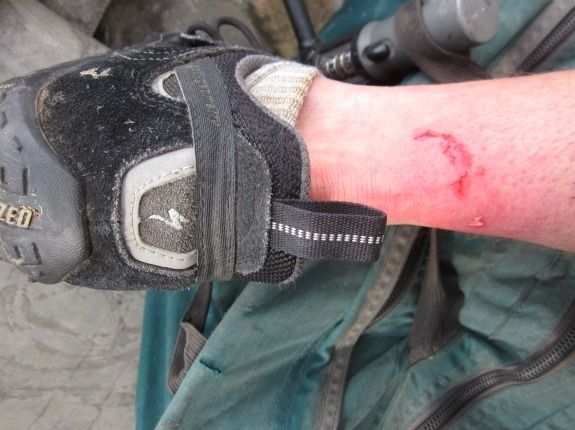
She said yes. I asked if I could see the papers. She said they were lost. Her teenage girls had begun to laugh and giggle at me, and the grandmother who had come out of the house also wore the shadow of a smirk on her face. Nobody apologized or asked if I needed help.
I requested alcohol to clean my wound, which was oozing blood, and after the two women haggled nervously for a minute, I lost my patience and rolled back the way I had come. I needed to get medical attention. One hundred yards down the road, the same dog–a brown-and-white mongrel with pointed ears and wicked eyes–came at me again. I picked up a hunk of cement and threw, just missing the animal as it fled into the brush. The family sullenly watched the entire exchange. I rolled on.
The presence of dogs in Ecuador, as in all developing nations, baffles me. They’re often no better than rats, far less useful than goats and meaner by miles than pigs–yet the people feed them and maintain the dogs’ health just enough to keep them alive. They sport bleeding bald spots and rib cages like washboards, and about 50 percent cannot resist the urge to chase people on bicycles. Most dogs here don’t seem to be strays. That is, they usually appear to belong to a particular household–but why? Do people love these dogs? Name them Max? I doubt it.
As an experienced cycle tourist, I have a mixed relationship with dogs. I have loved several like siblings, and it tickles me every time I see a well-groomed, friendly dog on a leash here–but that gang of mongrels loitering by the roadside 200 yards ahead strikes dread and loathing in me. I often scheme how I might exact the most satisfying revenge on the dogs that harry me down the road through almost every village, snarling ferociously as though I had done something to outrage them. Carrying rocks in a front basket seems an easy precautionary tactic–though I don’t currently have a basket. Firing a three-pronged pole spear loaded with a rubber hand loop at one end would be extremely satisfying. The other day, in the outskirts of Quito, one of the usual “ribcage mutts,” as I call them, charged me and gave me hell for crawling past on a steep grade. It then fled toward a doorway as I launched an orange at its rear end. The owner, who probably hadn’t ever bathed his dog or picked up its poop in a used newspaper bag, poked his head out the upstairs window and yelled at me that I had antagonized the dog by not walking my bike. The exchange made me wonder if, perhaps, some people here do love their dogs even though they neglect them three-fourths of the way to death.
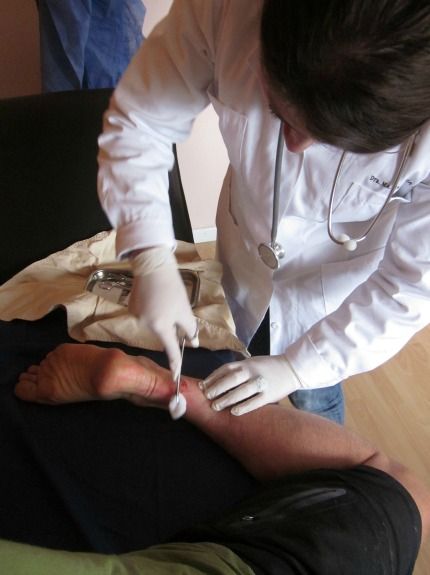
In the village of Turi, overlooking beautiful Cuenca below, I stopped at a small store and bought a vial of antiseptic for 50 cents and gave my leg a rough cleaning outside. I joined two local boys outside the school, each on their laptops using the free wi-fi, and went online to read what I could about rabies. I had a happy hour beer appointment with another traveler at 6 p.m. in Cuenca and I didn’t want to visit the hospital unless entirely necessary. Before I even connected, a car pulled up in the square and out stepped three beautiful nurses. I put away my laptop and rolled over. “Hello. I was just bitten by a dog,” I said, showing them the wound. “I cleaned it with disinfectant, but can you help? Do you think there is risk of rabies?”
“Yes,” one said. “You need attention.” The women invited me to follow them to the town’s health clinic, where they weighed me, took my blood pressure, measured my height and asked for my name, age, passport number and civil state, taking notes on a clipboard the whole time. Finally, they cleaned the bleeding wound and wrote me an order form for rabies vaccination at Cuenca’s main medical center.
“Is there any cost?” I asked as they began to gesture their farewells. “Nothing,” one said to me, shrugging. ‘We are a public hospital.”
In Cuenca, I found the main hospital closed, for it was after 4 p.m. I spent the late evening researching the perils of rabies and found myself terrified after a few minutes of reading off my laptop. Rabies is extremely deadly. If a person exhibits the first sign of the disease–tingling or burning around the wound–they are usually already goners on an unstoppable downward spiral toward a painful death. At this point, treatment is only given to ease the suffering. Only a handful of people have ever experienced rabies symptoms and still overcome the disease. Usually, to save a bite victim’s life, the vaccine must be delivered prior to the development of the virus in the spinal column and brain. The more I read, the more afraid for my life I became–and angry at the family that never even said they were sorry for their dog’s actions. I noted from several online sources that many authorities will prioritize the testing for rabies of a dog that has bitten someone. This examination is not a forgiving one and may require dissecting the dog’s brain–which got me thinking about my revenge.
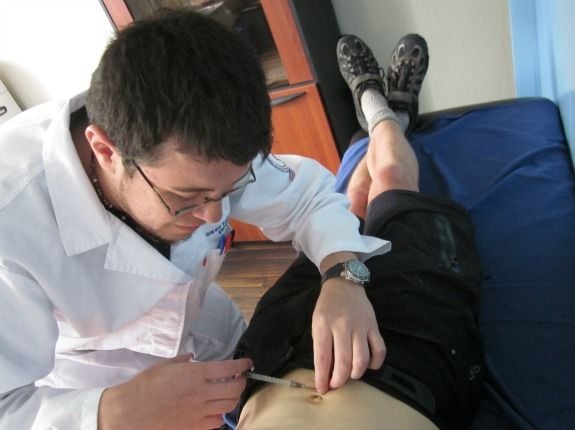
“Would you like me to show you where this dog lives?” I hopefully asked the doctor the next morning at Medical Center Number 3, on Calle 12 de Abril. “It’s no trouble. I would be happy to take you there.”
“No,” he said confidently, then ordered me on my back on a cot.
An assistant asked me to pull up my shirt and explained that this would be the first of seven injections into my abdomen, one a day for a week–which spoiled my plans to camp for two or three nights in the lake-studded wilderness of Cajas National Park, 20 miles west and a vertical mile above.
“We close at 4 each day,” the assistant said. “Make sure you’re here. If you miss a day we must begin the whole series again.”
They tossed the needle in the trash and said, “Hasta mañana.”
Rabies treatments are not conducive to the spontaneous travel lifestyles. In my case, I was required to remain in and around Cuenca for six days. I only dared leave town on a bus–and I checked ahead to be sure that Loja, my next destination and 130 miles south, had a vaccination center so I could complete the series. I am now immune to rabies for the next two years, which gives me a powerful sense of indestructibility. Still, I’m thinking about that wicker handlebar basket full of rocks.
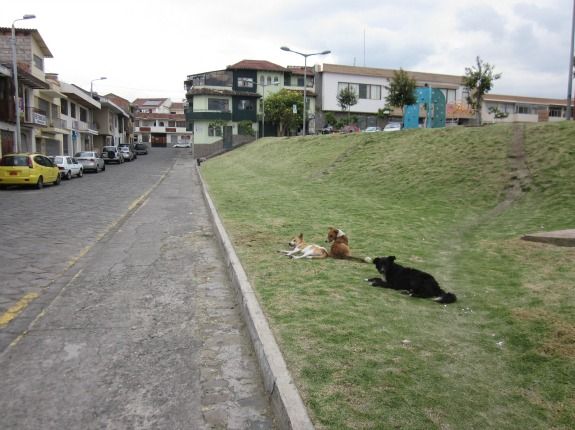
Rabies: What to Know, What to Do
According to the U.S. National Library of Medicine, rabies is carried by mammals and may be passed to a human by a bite or even just a slab of the tongue, as the virus occurs in an infected animal’s saliva. Aside from dogs, other common carriers of rabies include cats, bats, foxes, raccoons and skunks. Anyone who comes into contact with a wild or unknown mammal should be considered at risk of rabies and receive treatment immediately. Symptoms appear following the incubation period, which may take just 10 days or as long as several years. There is no cure once symptoms appear. These may include fever, numbness, tingling and hyperactivity. Death usually occurs within seven days of the onset of symptoms.
Rabies kills more than 55,000 people per year, mostly in Asia and Africa. Travelers to at-risk areas–rabies occurs in most countries–should consider getting immunized before going.
Warning Bats–one of the most common carriers–can deliver a bite without the victim even realizing it. Take no chances. Get vaccinated if you suspect you’ve had contact with an infected animal.
Drinking Alcohol During Rabies Vaccinations As the doctor injected my second dose of Fuenzalida-Palacio vaccine last Friday he said, “No beer, whiskey, nothing.” Oops. “I had a little wine last night,” I said. He shrugged and said, “No big deal.”
Well, what is the deal? I wanted to know because Cuenca has its own brewpub with two imperial stouts on tap, and this was also Super Bowl time in a town swarming with gringo football fans. In other words, I planned on having a few drinks that weekend. According to The Travel Doctor, only two vaccines–that for Japanese encephalitis and the oral vaccine for cholera–come with restrictions on alcohol consumption. Numerous other websites and forums address the same question that I had–can one drink alcohol during post-exposure rabies treatment? Though some travelers have been advised by hospital staff not to exercise, drink alcohol, tea or coffee, or have sex for four months following the first anti-rabies shot, this seems to be entirely unfounded advice.
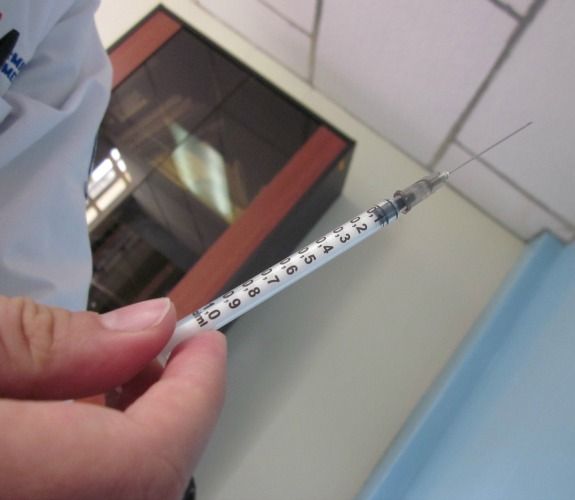
/https://tf-cmsv2-smithsonianmag-media.s3.amazonaws.com/accounts/headshot/Off-Road-alastair-bland-240.jpg)
/https://tf-cmsv2-smithsonianmag-media.s3.amazonaws.com/accounts/headshot/Off-Road-alastair-bland-240.jpg)